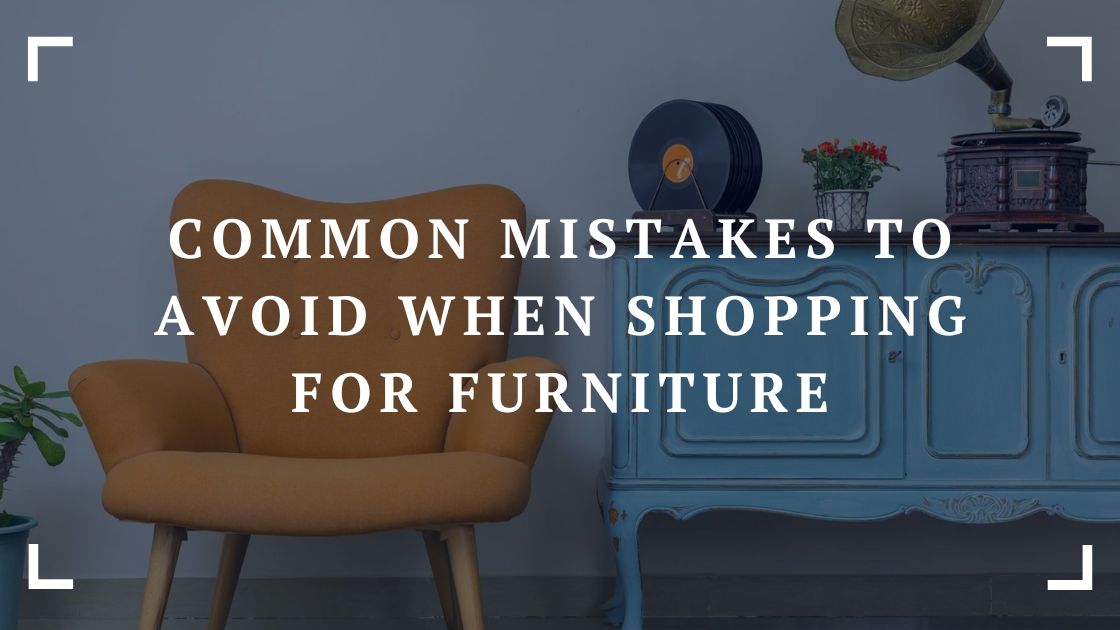Furnishing your home is a significant venture, both financially and aesthetically. The pieces you select will not only dictate the look of your environment but will also play a pivotal role in your everyday life. However, the lure of the showroom and the excitement of revamping a space can lead even the savviest of shoppers to make regrettable mistakes. In this guide, we’ll pin down the most common blunders made during the furniture shopping process and provide you with the tools to sidestep them.

Understanding Your Space When Browsing for Furniture
The first step in the furniture shopping process is understanding your space. It’s essential to measure and assess your home accurately to avoid purchasing pieces that are either too large or too small. Visualize how each piece will fit within the context of your room’s layout and consider whether it complements or clutters the space.
Tips on Measuring Your Space
- Use a professional-grade, long measuring tape to obtain measurements with precision.
- Account for architectural features such as doors, windows, and heating vents.
- Consider the flow of traffic within the room, ensuring that there is ample space for movement.
- Don’t skimp on floor-planning tools; digital apps and printable grids can help you map out your room effectively.
Getting a Professional Opinion
Online stylists can be invaluable—after submitting your room’s measurements and an idea of your style, they can provide a visual representation of how different furniture layouts might look in your space. And, at the Flitch website, and other similar ones, you can learn about how to go about getting yourself some professional help. That way, you can avoid making any costly mistakes and ensure that your furniture fits seamlessly into your home.
Overlooking Comfort
A common pitfall in furniture buying is favoring aesthetics over comfort. While a piece may be visually stunning, it’s of no use if it’s not a pleasure to use. Remember, comfort is subjective and highly personal, so take the time to sit, lay on, or test every piece that catches your eye.
Prioritizing Comfort
- Upholstered furniture should be proportionate to the user’s height and depth preference.
- Cushions should offer support without being too firm or too soft, and should preferably be reversible for even wear.
- Test the sitting experience in-store as you would at home; if you often put your feet up, find out if a matching ottoman or chaise lounge is available.
Ignoring Quality
Furniture of superior quality is not only more durable but often showcases better crafting and materials. Recognizing this can save you money in the long run, as higher quality items require less frequent replacement.
Identifying High-Quality Materials
- For wooden furniture, look for solid wood construction or high-grade wood veneers.
- In upholstery, check for furniture with springs, dense foam, and kiln-dried hardwood frames.
- Read up about the manufacturer’s reputation, as those with a long-standing history of quality are more reliable.
Warning Signs of Low-Quality Furniture
- Visible knots, warps, or twists in wood are indicators of low wood quality.
- Uneven padding, creaky joints, and poor fabric alignment suggest overall inferior manufacturing standards.
- Manage your expectations with pricing; if it seems too good to be true, it often is.

The furniture you choose will tell the story of your home. By heeding the advice in this guide, you can ensure that the story is one of comfort, quality, and wise decision-making. Reflect on your personal style, the function of your space, and your long-term needs to guide your furniture purchases. And don’t be afraid to seek out guidance from professionals or even friends and family—collective experience is often the best teacher.
Take the time to shop wisely, and you’ll find that each piece you select will not only enhance the beauty of your home but also support the function of your life within it. Your home is a reflection of who you are; ensure that reflection is one you’re proud of for years to come.
Feel free to share your own furniture shopping experiences in the comments below. What strategies have worked for you, and what pitfalls have taught you important lessons? Engage with our community and help others to craft their personal spaces with confidence and care.


